Stage 1 + 2
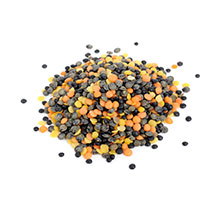
Lentils, a member of the legume family, are full of necessary nutrients. Try this recipe with different kinds of lentils, Red, yellow, French or green. For older babies try serving this dish with chicken, carrots or small diced avocado.
- 1 cup water or stock
- 1/4 cup lentils (red, yellow, French or green)
Bring 1 cup water or stock to boil add lentils, cover and cook for 30 minutes add more water or stock if needed. Check tenderness of lentils, if tender remove from heat and cool. Once lentils are cool enough to handle, add them to blender or food processor, pulse to begin pureeing add additional liquid to thin out if desired thickness. Serve along with rice or rice cereal to thicken.
Recipe Yields: 4 Servings
Storage Time: 3 months in the freezer
Lentils are high in fiber and are an excellent source of minerals. They are full of B-vitamins and protein.

Stage 1 + 2

By combining cantaloupe with blueberries, you can introduce new flavors to your baby in a simple dish that is packed with nutrients and anti-oxidants.
- 1/2 cup diced cantaloupe
- 1/2 cup blueberries
Puree each separately. Fill bowl half with cantaloupe (consider the bowl a clock and the half mark is 12 and 6), the other half is the blueberry puree. Now using a spoon swirl the blueberry puree into the cantaloupe for a fun design, it gives baby a taste of both while leaving part of the puree as a single flavor.
You can also try substituting the blueberry with:
Peach
Banana
Avocado
Raspberry
Recipe Yields: 2 Servings
Store the remaining puree in the freezer storage pods to use later. You can store the fruit purees separately or mix together and then freeze.
Storage Time: 3 months in the freezer
Cantaloupe is an excellent source of vitamin and A & C.
Stage 1 + 2
The combination of carrots and broccoli will provide your baby with the nutrients they need for healthy growth and development. The sweetness of the carrots make them a great combination food when introducing new vegetables to baby.
- 1 cup fresh broccoli, chopped
- 1 cup fresh carrots, chopped
Clean broccoli and carrot. Chop one cup of each and steam for 8-10 minutes. Using an immersion blender, blend to desired consistency and serve.
Recipe Yields: 6-8 Servings
Store the remaining puree in the freezer storage pods to use later.
Storage Time: 3 months in the freezer
Broccoli is a wonderful source of vitamin C & vitamin K and carrots are a great source of vitamin A.
Stage 1 + 2

- 1/4 honeydew melon, chopped
- 1 banana
Combine 1/4 of a honeydew melon chopped and one ripe banana peeled and sliced. Mix with immersion blender to the appropriate consistency for your baby.
Recipe Yields: 4 Servings
Storage Time: 3 months in the freezer
This recipe offers Vitamin C and Potassium which are necessary nutrients for your child’s growth.
Stage 1 + 2
1 Butternut squash
1/2 cup water
Cut one butternut squash in half, lengthwise. Scoop out seeds. Place halves face down on a 9×13 baking pan in ½ cup water. Bake at 400° F for 40 min. Scoop out squash meat and place in bowl. Mix with immersion blender, add breast milk or water to thin the puree to desired consistency.

Stage 1 + 2
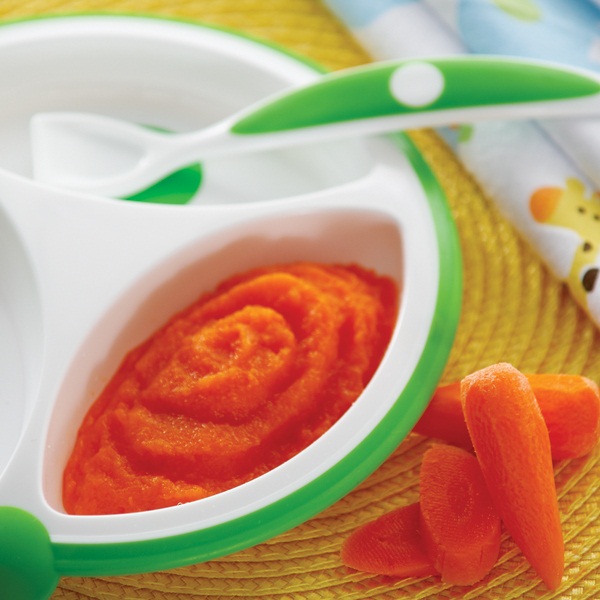
Carrots are an excellent source of vitamin A. Carrots also contain potassium and calcium.
The ratio of raw to steamed carrots remain the same. 1 cup of raw carrots will make approximately 1 cup of puree.
Cut washed carrot into slices or pieces. Steam the carrot slices and allow them time to slightly cool. Blend with immersion blender to desired consistency. Add breast milk or water to thin the puree to desired consistency.
For Stage 3 and stage 4 cut the raw carrots into pieces sized for little fingers to pick up easily before steaming. Steam carrots just until tender. Serve cool or warm.

Stage 1 + 2
Peas are a good source of potassium, calcium, and magnesium. Peas also contain vitamin C, niacin, and folic acid.
The ratio of raw to steamed peas remain the same. 1 cup of raw peas will make approximately 1 cup of puree.
Steam peas until tender. Cool slightly and then using your immersion blender, blend to desired consistency. Add breast milk or water to thin to the desired consistency.
For Stage 3 and stage 4 leave the peas whole. Steam slightly. Serve cool or warm.

Stage 1 + 2
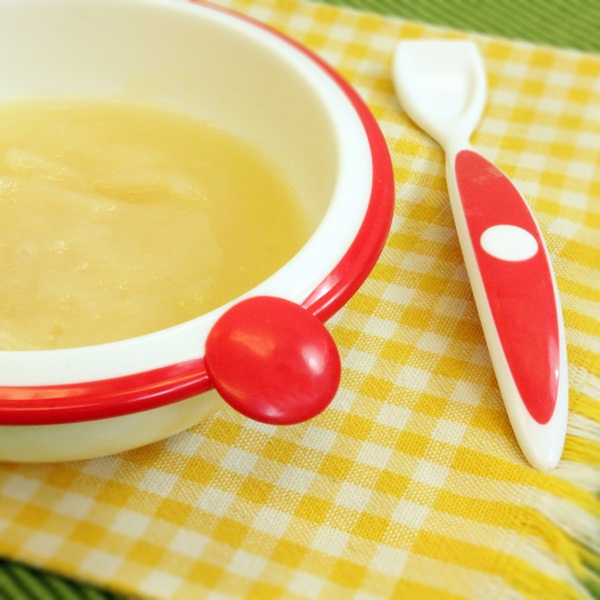
Pears are a good source of potassium and calcium. They also contain vitamins A, C and folic acid.
Make sure the pear is ripe and soft, then peel and remove seeds and stem. Cut the fruit into small pieces. Blend until smooth with immersion blender or masher. Add breast milk or water to thin to the desired consistency.
As your child grows into stages three and four, mash the pear for a chunkier consistency, or simply dice the pear into pieces sized for little fingers to pick up.

Stage 1 + 2
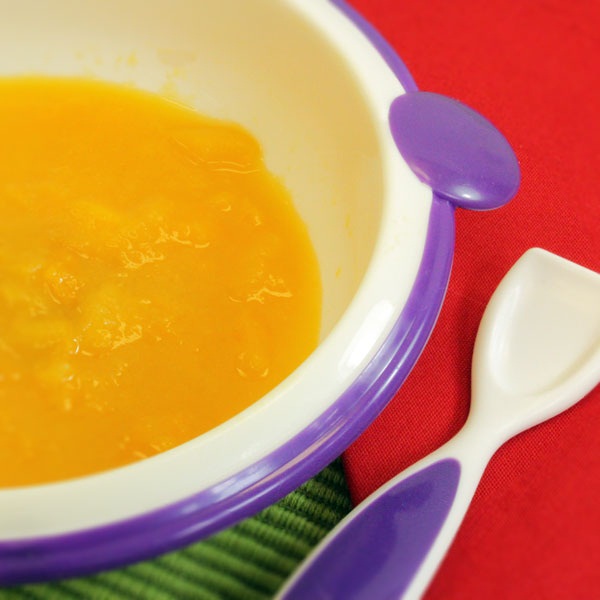
Peaches are a good source of potassium and niacin.
To make Peach mash or puree for your baby, wash and peal the peach, then cut the fruit in small pieces. Blend until smooth with immersion blender or masher. Add breast milk or water to thin the puree to the desired consistency.
As your child grows into stages three and four, mash the peach for chunkier consistency or simply dice the peach into pieces sized for little fingers to pick up.

Stage 1 + 2
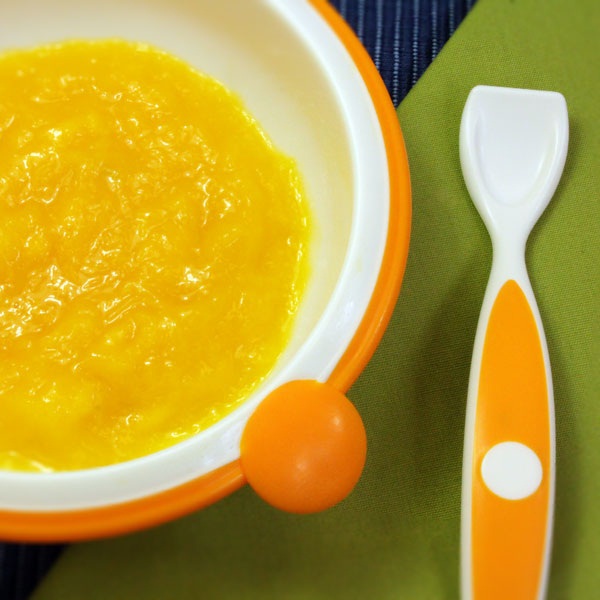
Mangos are a good source of calcium, magnesium and potassium. Mangos provide and excellent source of vitamins A, C, E, K and folic acid.
Wash, Peel and seed the one mango. Then cut the fruit into small pieces and blend until smooth with immersion blender. Add breast milk or water to thin to the desired consistency.
As your child grows into stages three and four, mash the Mangos for a chunkier consistency, or simply dice mangos into pieces sized for little fingers to pick up easily.

Stage 1 + 2
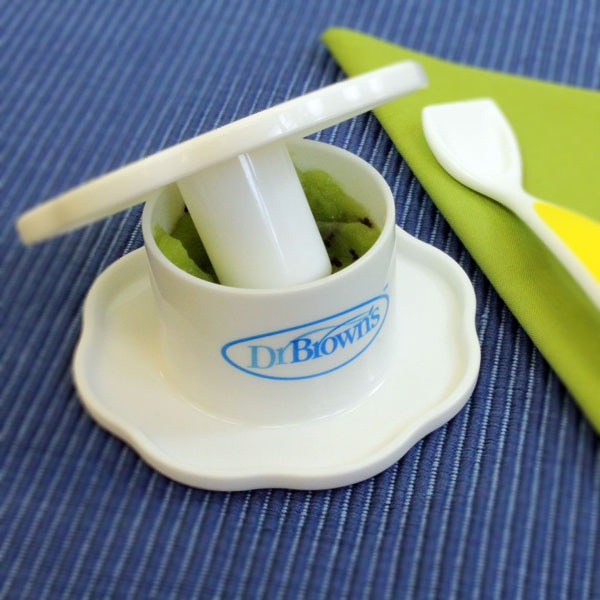
Kiwi are a good source of calcium, magnesium and potassium. They also contain vitamins A, C and folic acid.
Already perfectly portioned, one kiwi is sized to offer your baby one serving of fruit.
To prepare, simply peel the ripe fruit, cut into small pieces and mash to desired consistency. Add breast milk, formula or water to thin puree.
For Stages 3 and 4, cut the kiwi into pieces sized for little fingers to pick up easily. It’s a great first finger food because it can be gummed or chewed.

Stage 1 + 2
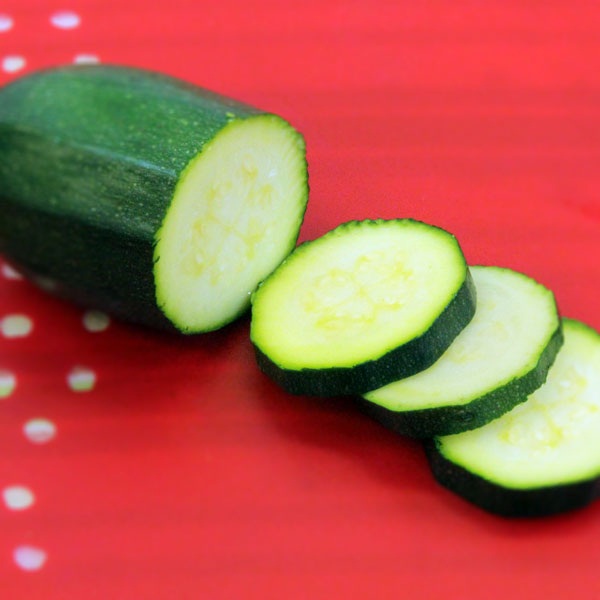
A yummy source of potassium and magnesium, zucchini is easy to prepare and keeps well.
The ratio of raw to steamed vegetables is 1:1. One cup of raw veggies will make approximately one cup of puree.
Thoroughly wash the zucchini and cut it into slices or chunks. Boil or steam until soft. Cool slightly and then using your immersion blender, blend to puree, adding breast milk or water to thin to the desired consistency.
For Stages 3 and 4, cut the raw zucchini into pieces sized for little fingers to pick up easily before steaming. Steam just until tender, and then cool slightly before serving.
After introducing zucchini, try summer squash. It can be prepared and served the same way.

Stage 1 + 2
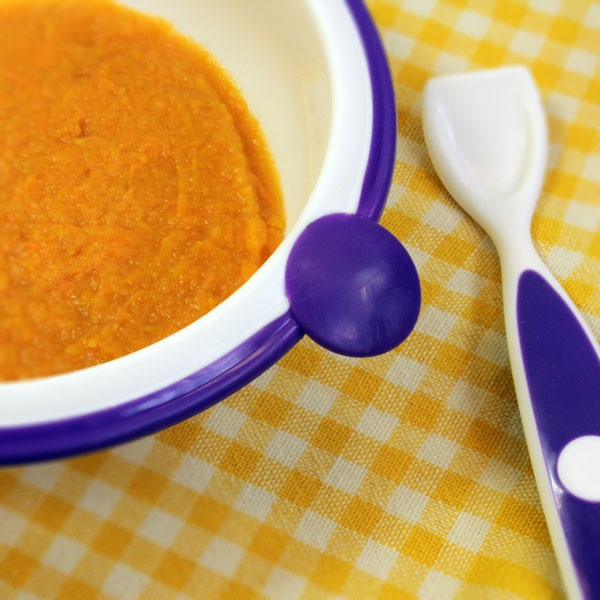
Sweet potato is an excellent source of potassium, and contains magnesium, and calcium. They also contain vitamins A, C niacin, and folic acid.
The ratio of raw to steamed potato is 1:1. One cup of raw potato will make approximately one cup of puree.
Peel the sweet potato and cut it into chunks. Boil or steam the chunks. Cool slightly and then blend with immersion blender. Add breast milk or water to thin the puree to the desired consistency.

Stage 1 + 2
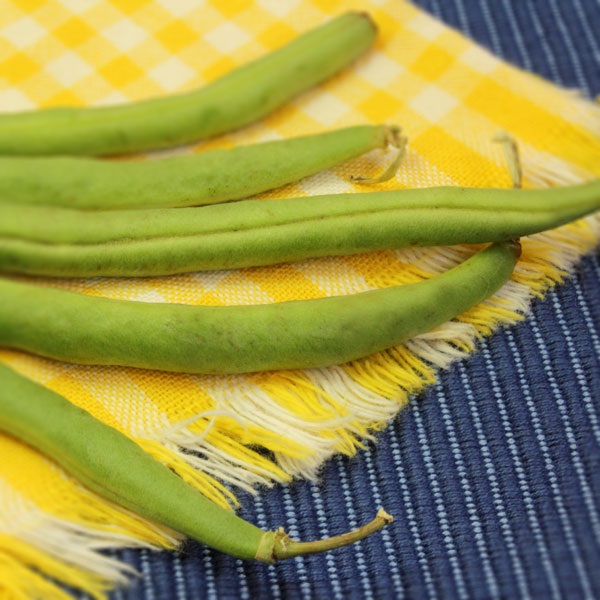
Green beans are an excellent source of potassium and folic acid.
The ratio of raw to steamed green beans remains the same. 1 cup of raw green beans will make approximately 1 cup of puree.
Cut washed green beans into small pieces and steam. Cool slightly and then blend with immersion blender. Add breast milk or water to thin the puree to the desired consistency.

Stage 1 + 2
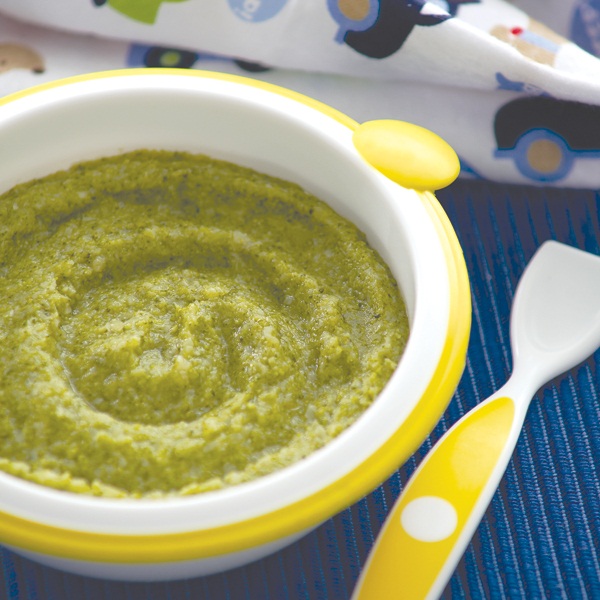
Broccoli contains potassium, phosphorus, magnesium and calcium. It also contains vitamins C, niacin, and folic acid.
1 full stalk of broccoli will make approximately ½ to ¾ cups of puree.
Wash in cold water. Break the broccoli into florets and remove the leaves and most of the thick parts of the stems. Boil or steam the florets. Cool slightly and then blend with immersion blender. Add breast milk or water to thin the puree to the desired consistency.

Stage 1 + 2
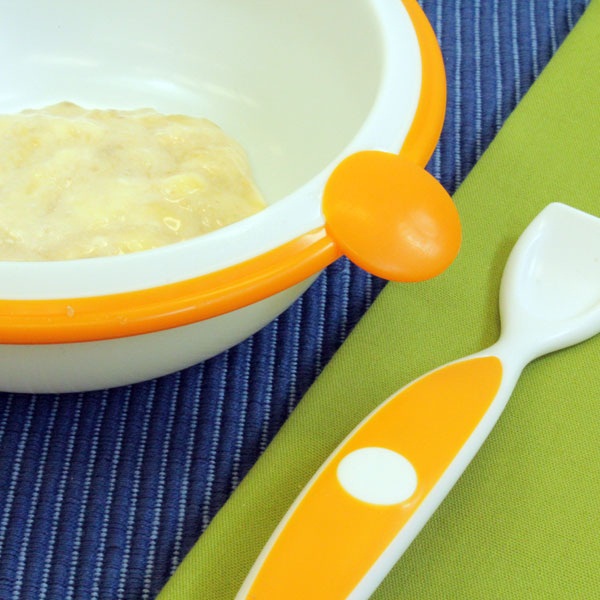
Bananas are a good source of potassium, magnesium and vitamin C.
Make banana mash or puree for your baby one serving at a time to avoid browning.
Peel banana and cut the fruit in small pieces. Blend until smooth with immersion blender or masher. Add breast milk or water to thin the puree to the desired consistency.
As your child grows into stages three and four, mash the banana for a chunkier consistency, or simply dice banana into pieces, sized for little fingers to pick up easily.

Stage 1 + 2
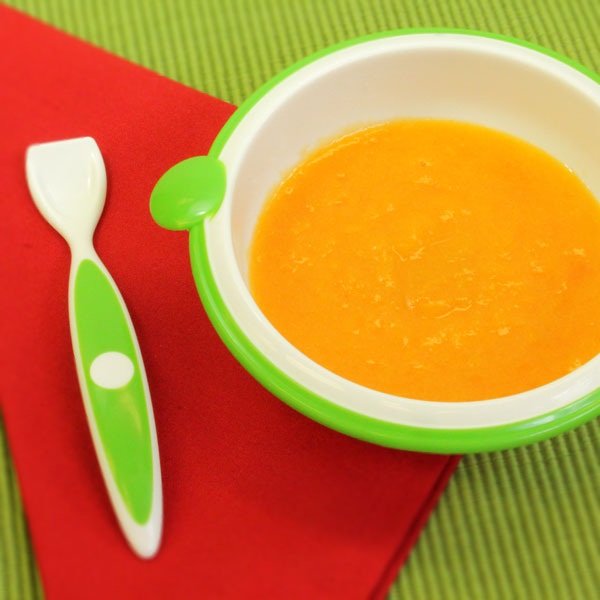
Apricots are a sweet source of potassium, magnesium, vitamin A and C.
4 to 6 apricots will make approximately 1 cup of puree.
Wash, peel and pit apricots, then cut the fruit into small pieces. Blend until smooth with immersion blender. Add breast milk or water to thin the puree to the desired consistency.
As your child grows into stages three and four, mash the apricots for a chunkier consistency, or simply dice apricots into pieces, sized for little fingers to pick up easily.
Stage 1 + 2

Apples are a good source of potassium. They also contain fiber, calcium, vitamins A, C, and Folic Acid as well as the mineral magnesium.
- 2 Red Delicious apples
- ½ cup water
- Cinnamon (optional)
Wash, peel, core and dice apples. In med saucepan bring water and apples to a boil. Cover and let cook 10 – 15 minutes, or until apples are tender. Remove from heat and add Cinnamon. Use immersion blender and puree until smooth. Let cool before serving.
For chunkier applesauce (as your child moves into Stage 3 and Stage 4) use masher.

Stage 1 + 2

Avocado is a great first food for baby because it contains essential fats and trace nutrients, vitamins A, C, Niacin, and Folic Acid that your baby needs to grow. Also, Avocados are easy for baby to digest.
Peel and take out the pit of a ripe avocado – do not cook. Cut “meat” in small pieces. Blend until smooth with immersion blender. Add breastmilk, formula or water to thin the puree to the desired consistency.
As your child grows into stages three and four, mash the avocado to chunkier consistency, or simply dice avocado into pieces, sized for little fingers to pick up easily. You can also introduce new flavors by spicing up the avocado mash with a little garlic (minced or powder) or even cumin. Just like new foods, introduce spices to your baby one at a time.

Stage 1 + 2
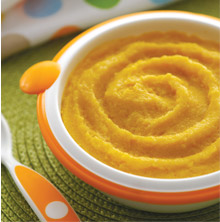
Winter Squash is an excellent source of magnesium and contains calcium, iron, and potassium. It also contains vitamins A, C, niacin and folic acid.
Peel the squash. Scoop out the seeds and cut it into chunks. Boil or steam the squash chunks. Cool slightly and then blend with immersion blender. Add breast milk or water to thin the puree to the desired consistency.









